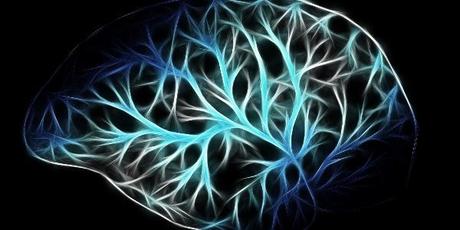
The holy grail of neurodegenerative disease research is discovering a pathway to healing-reversing neural damage, either through regeneration or surgical reconstruction. Our nerves control multiple biological functions. The complexity of cranial nerves has made regenerative therapies exceptionally challenging. The olfactory nerve (I) has become a favored model for the study of neural regeneration through the rewiring of axons or surgical transplantation.¹ It contains afferent fibers and is the only identified cranial nerve that may regenerate depending on the type and degree of underlying damage.
Cranial nerves are divided by responsibility; afferent nerves control communication by collecting sensory information, while efferent nerves control motor functions. The physical makeup of each is distinct; efferent neurons have short dendrites with a long axon, while afferent neurons have long dendrites and a short axon. Cranial nerves may contain solely efferent fibers, afferent fibers, or a combination of both- making the current methods of repair, reconstruction, experimental techniques, or future regeneration research very complex.
If surgery is not the answer?
Experimental techniques or surgical intervention on cranial nerves may be too invasive for some superficial siderosis patients, so what does this information suggest?
The presence of 8-oxo-dG (8‐hydroxy‐2′‐deoxyguanosine), a product of DNA oxidation found within cells, indicates some measurement of oxidative stress in Alzheimer's, Parkinson's, and multiple system atrophy patients. A 2014 case report found elevated 8‐OHdG levels confirming that oxidative stress is involved in the pathomechanism of superficial siderosis. While surgical repairs of the three superficial siderosis patients bleed sites resulted in a decrease of cerebrospinal fluid total tau (CSF t-tau), 8‐OHdG levels did not decline, so degeneration continued to progress even after surgical intervention.² In vitro studies have also demonstrated that excessive free-iron may lead to free radical production, resulting in oxidative stress and neurotoxicity to the underlying tissue.³ The best first step may be already in reach- combat neural damage progression with antioxidants.
Raising the antioxident question
Cells have demonstrated the ability to survive iron-induced toxicity by increasing the intracellular level of Glutathione in Parkinson patients. Comprised of three amino acids: glycine, cysteine, and glutamic acid, the chemical structure of over-the-counter GSH dietary supplements do not allow it to be taken orally for neurodegenerative disorders because little or none cross the blood-brain barrier.
Specialty compounding pharmacists have been able to create a pharmaceutical-grade product in an intranasal spray form. A Parkinson study established GSH delivered in a nasal form allows the small polar molecules to exploit the blood-brain barrier vulnerability between the nasal cavity and the brain allowing for a measurable increase in CNS GSH to high levels for up to one-hour post-administration.⁴
Could GSH repletion be used as a therapeutic intervention to slow damage in superficial siderosis?
Let us circle back to the olfactory nerve for a moment; inosine was noted to be beneficial in the rewiring of axons in a 2002 stroke research article. Inosines' benefit stems from its antioxidant, anti-inflammatory, axogenic and neuroprotective properties. It is now used in some spinal cord nerve treatment strategies to enhance the growth of axon branches from undamaged neurons. Multiple preclinical models have proven efficacy. These models led to positive inosine evaluation during clinical trials for multiple sclerosis, ALS, and Parkinson's disease.⁵
Michael Schwarzschild, MD, Ph.D., and his Mass General Hospital Parkinson Study Group, have been successfully investigating the mechanism of urate in neuroprotection. They determined that urate stimulates astrocytes. Astrocytes, star-shaped glial cells, are critical for brain function. We support beginning an investigation into the use of inosine to raise urate levels in superficial siderosis patients in the hope it may also prove neuroprotective in combating oxidative stress. ⁶
Oxidative stress is an undeniable factor in neuronal vulnerability, structure, and brain function. Investigation of neuroprotective antioxidants Vitamin C, Inosine, Glutathione, and respected Traditional Chinese Medicine herbals like Hericium Erinaceus deserve attention and superficial siderosis research funding.
A MJFF-funded Phase II Parkinson study demonstrated that while inosine is safe, tolerable, and does raise urate levels, superficial siderosis patients should always act with caution. Inosine is widely available commercially as a dietary supplement. Possible side effects are gout, kidney stones, and high blood pressure. Please discuss any medications or natural supplements with your physician before taking them.
References¹Xie Y, Schneider KJ, Ali SA, Hogikyan ND, Feldman EL, Brenner MJ (2020) Current landscape in motoneuron regeneration and reconstruction
for motor cranial nerve injuries. Neural Regen Res 15(9):1639-1649. doi:10.4103/1673-5374.276325
²Ozaki, K., Sanjo, N., Ishikawa, K., Higashi, M., Hattori, T., Tanuma, N., Miyata, R., Hayashi, M., Yokota, T., Okawa, A. and Mizusawa, H. (2015), Elevation of 8‐hydroxy‐2′‐deoxyguanosine in the cerebrospinal fluid of three patients with superficial siderosis. Neurol Clin Neurosci, 3: 108-110. doi: 10.1111/ncn3.159
³Stankiewicz, J., Panter, S.S., Neema, M. et al. Iron in chronic brain disorders: Imaging and neurotherapeutic implications. Neurotherapeutics 4, 371-386 (2007). https://doi.org/10.1016/j.nurt.2007.05.006
⁴Mischley, L., Conley, K., Shankland, E. et al. Central nervous system uptake of intranasal glutathione in Parkinson's disease. npj Parkinson's Disease 2, 16002 (2016). https://doi.org/10.1038/npjparkd.2016.2
⁵Peng Chen, David E. Goldberg, Bryan Kolb, Marc Lanser, Larry I. Benowitz Inosine induces axonal rewiring and improves behavioral outcome after stroke Proceedings of the National Academy of Sciences Jun 2002, 99 (13) 9031-9036; DOI: 10.1073/pnas.132076299
⁶The Parkinson Study Group SURE-PD Investigators. Inosine to Increase Serum and Cerebrospinal Fluid Urate in Parkinson Disease: A Randomized Clinical Trial. JAMA Neurol. 2014;71(2):141-150. doi:10.1001/jamaneurol.2013.5528

